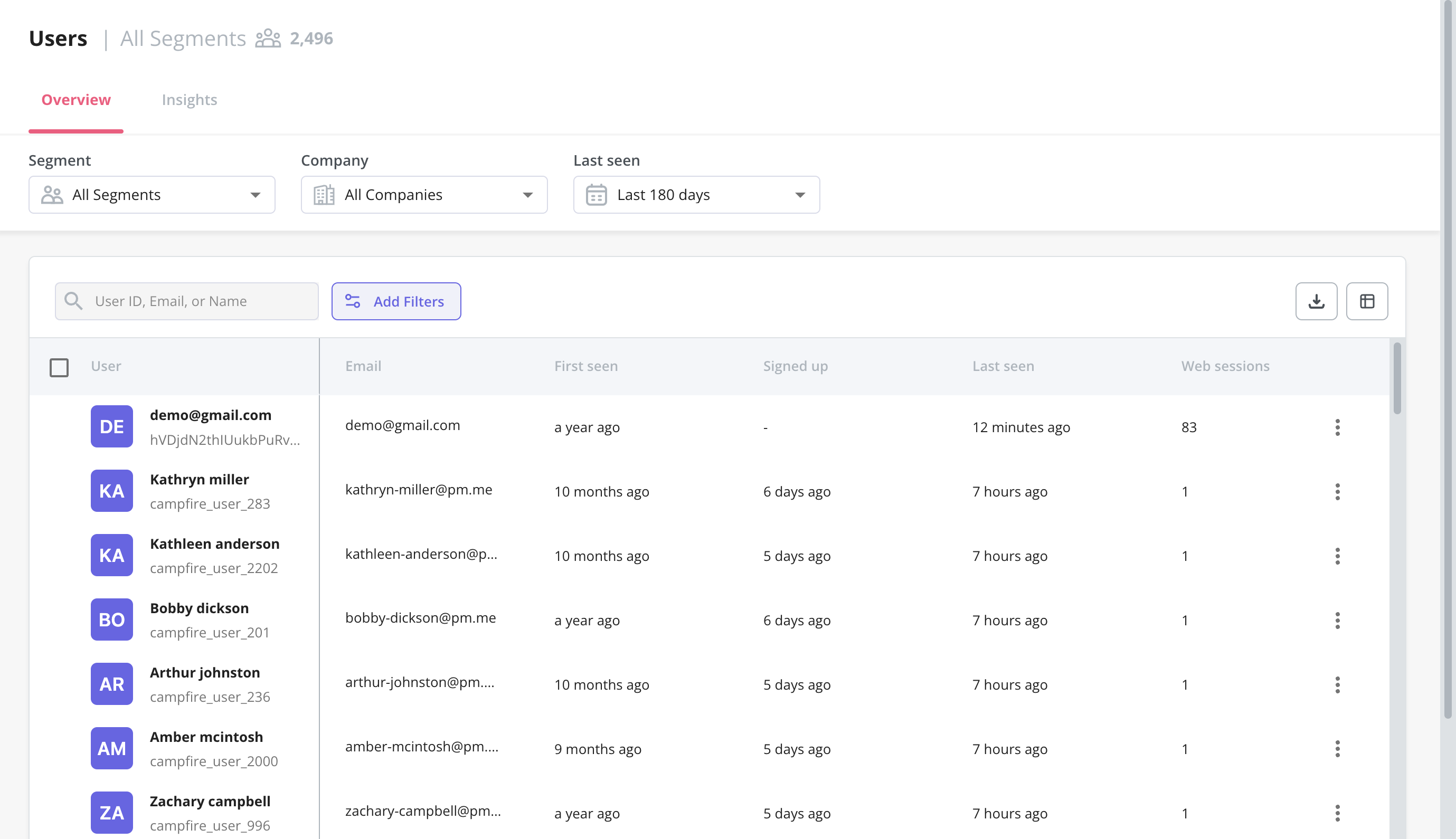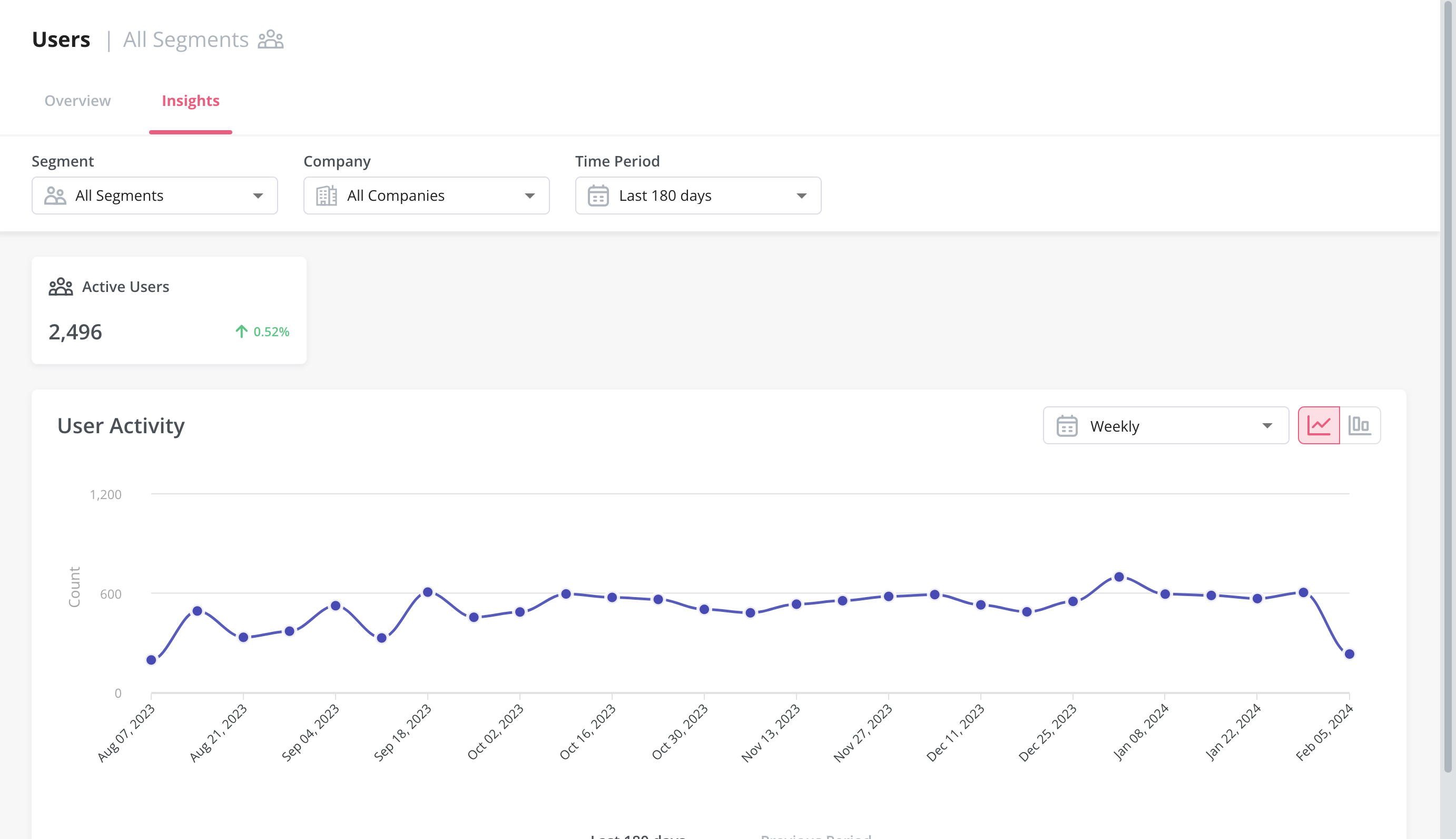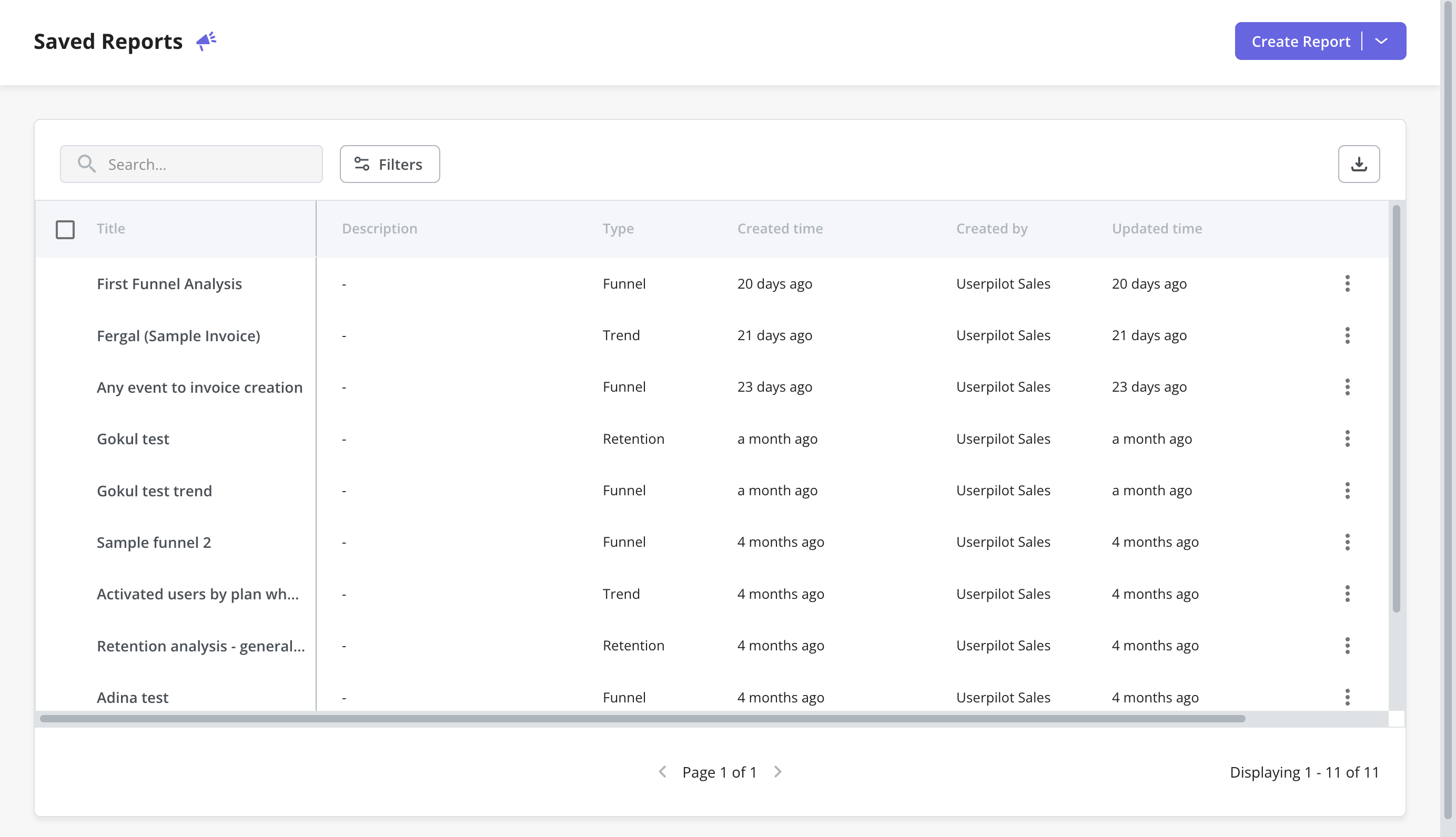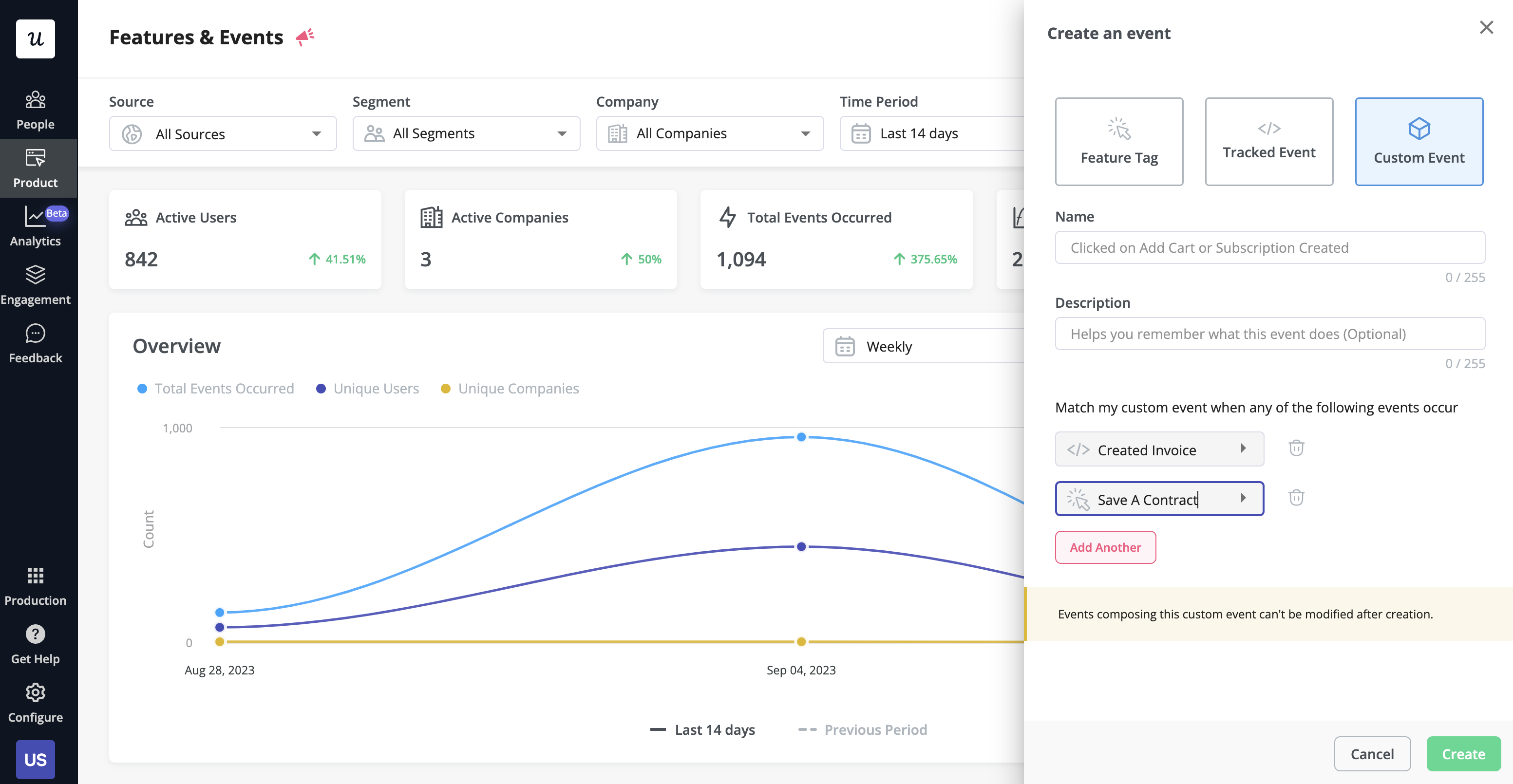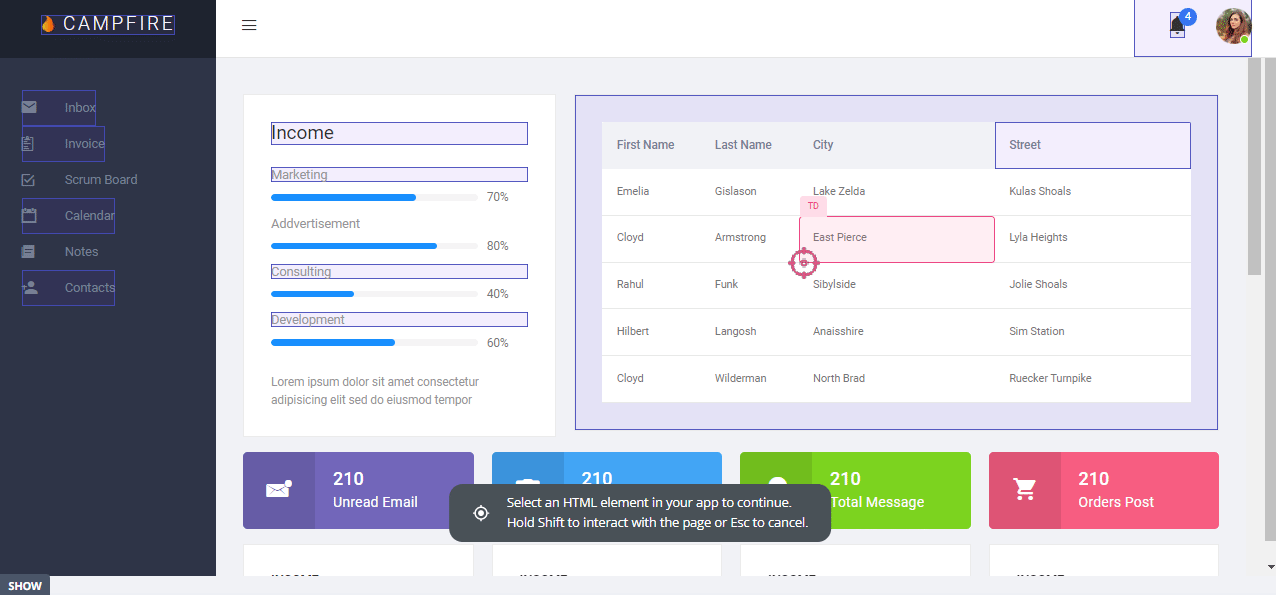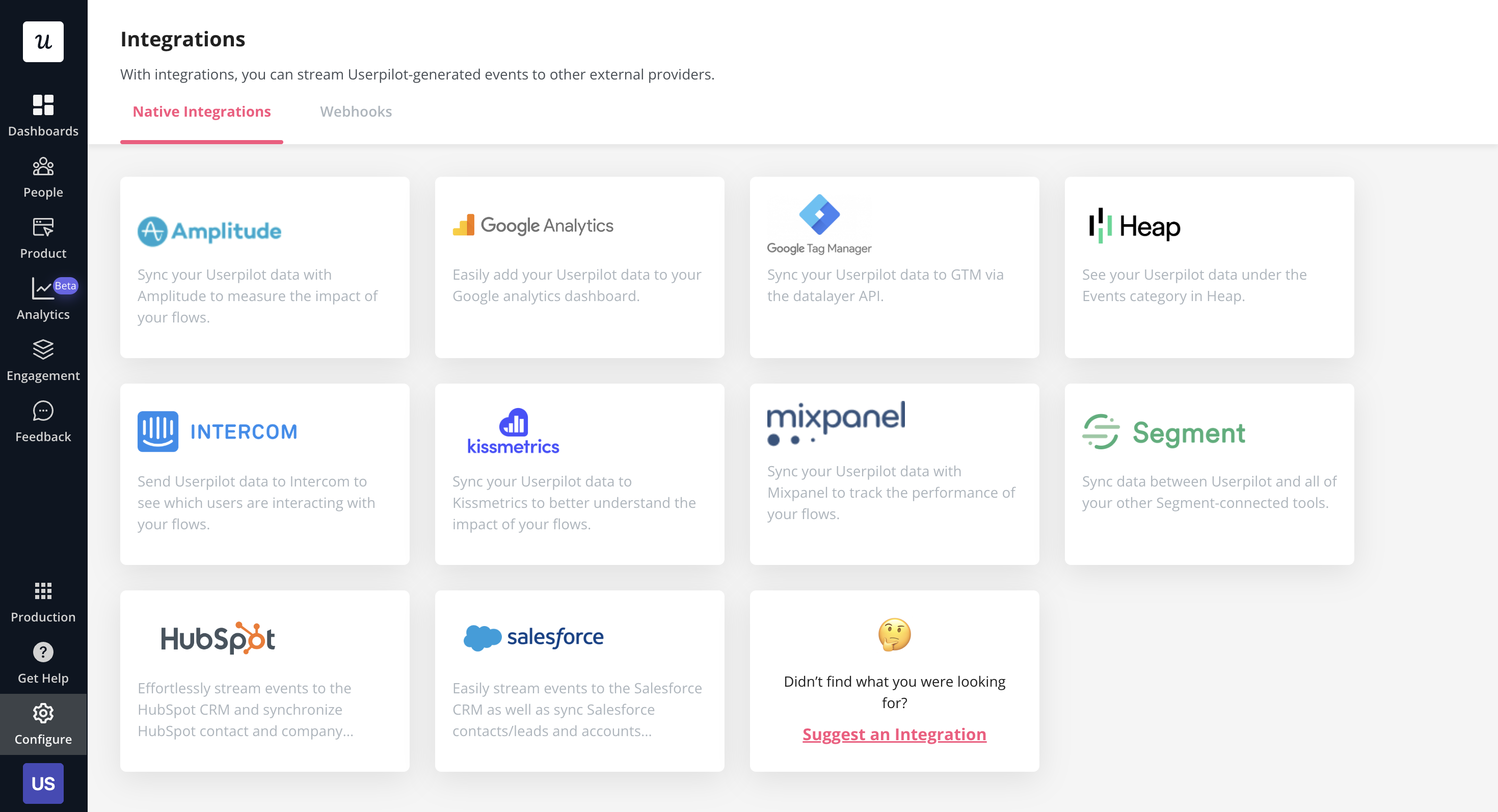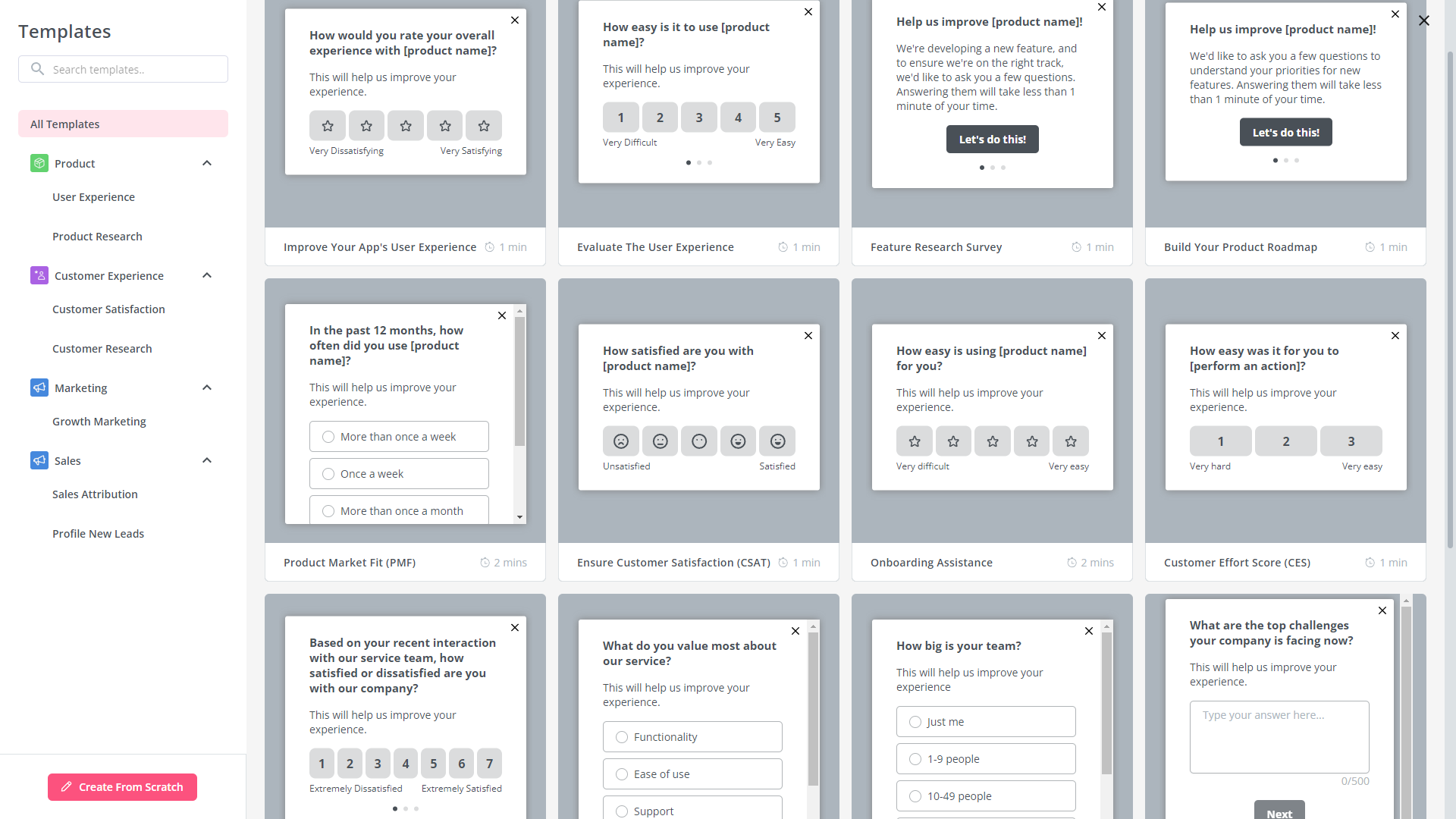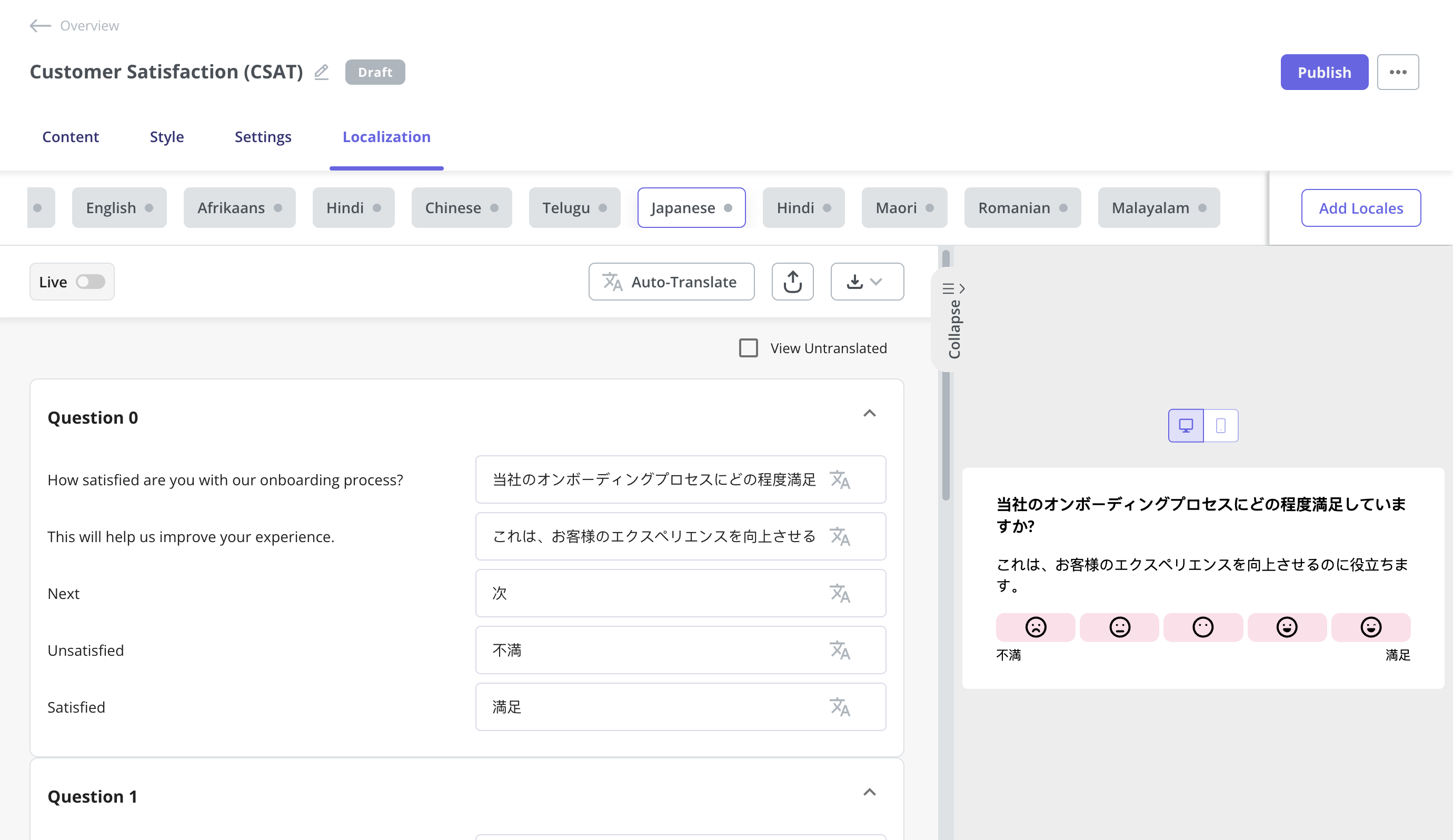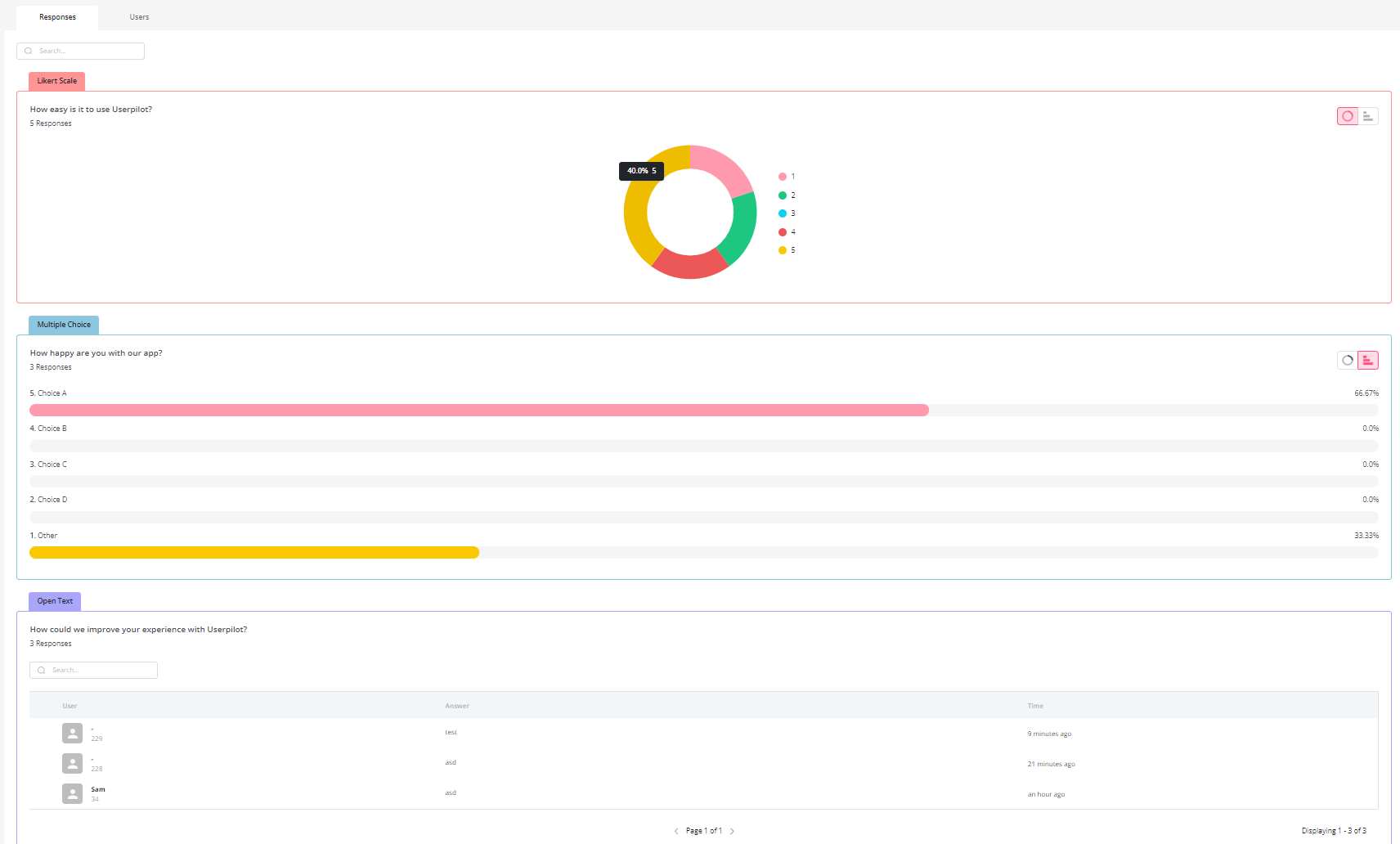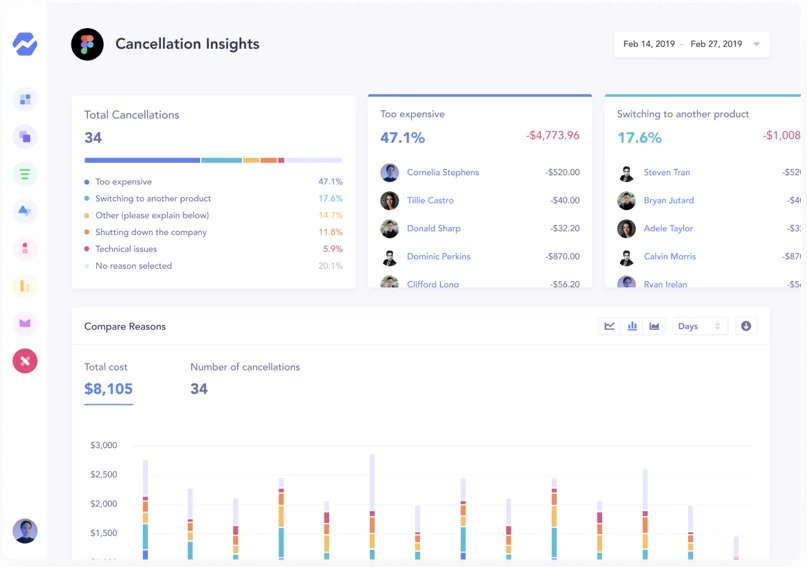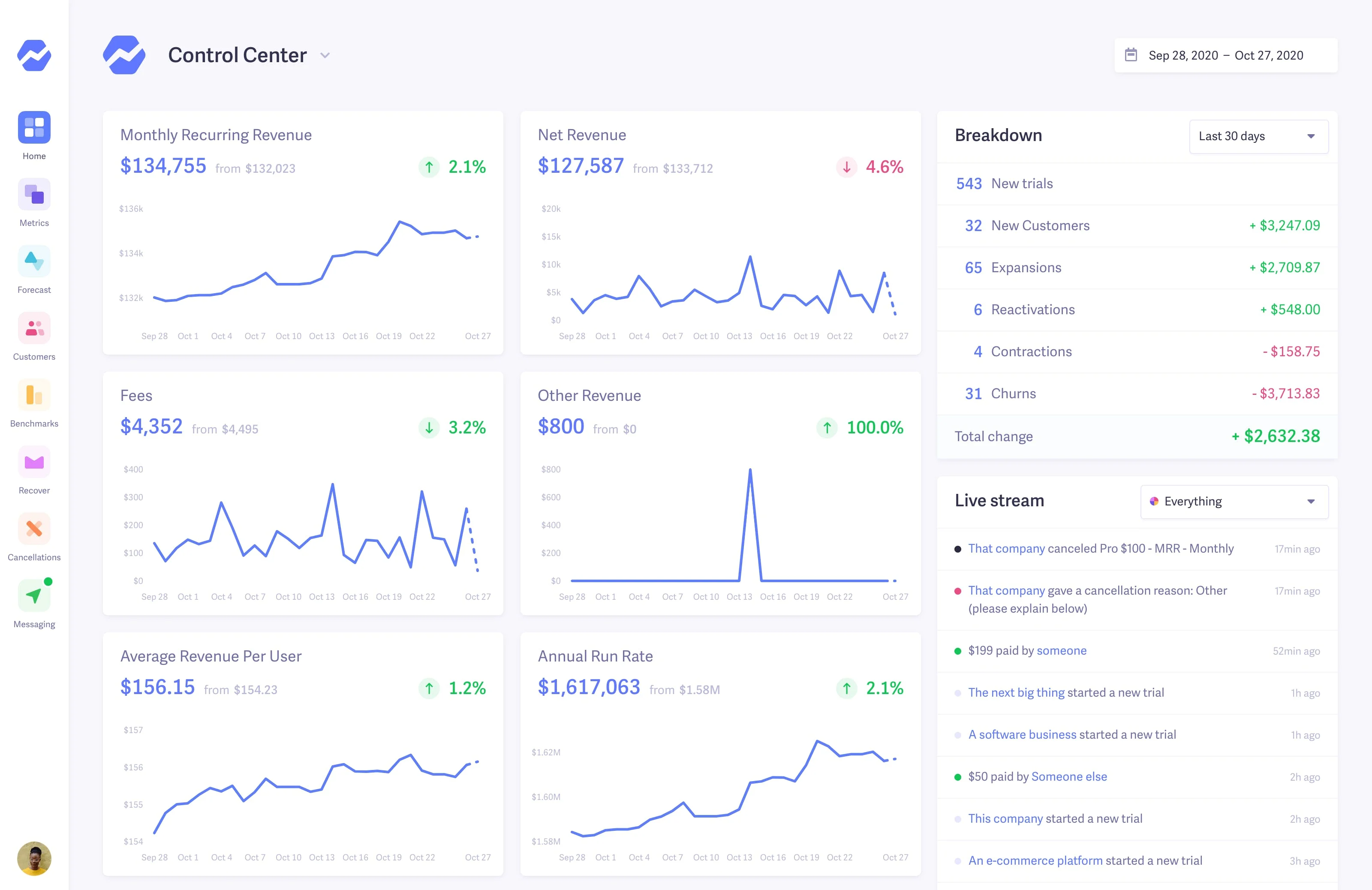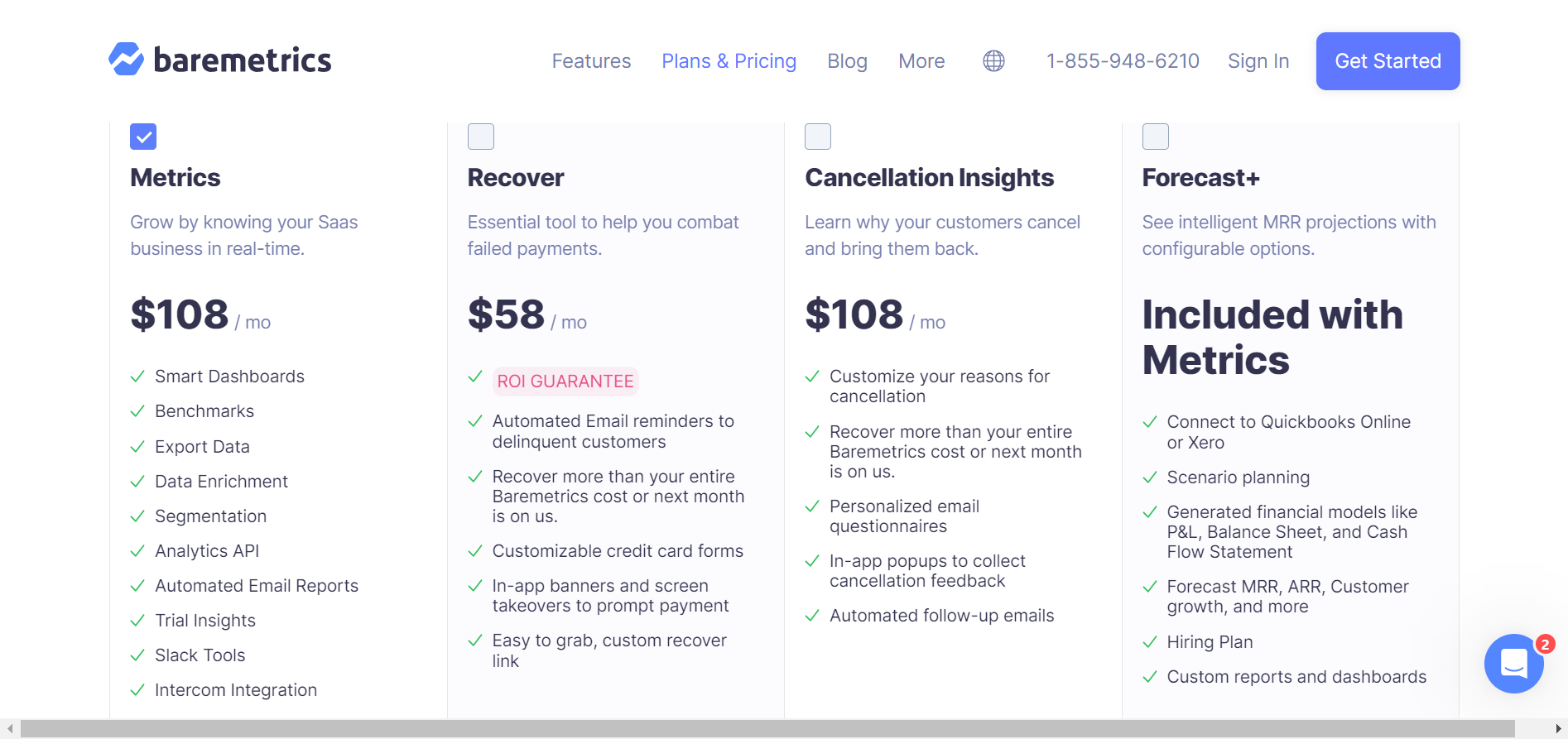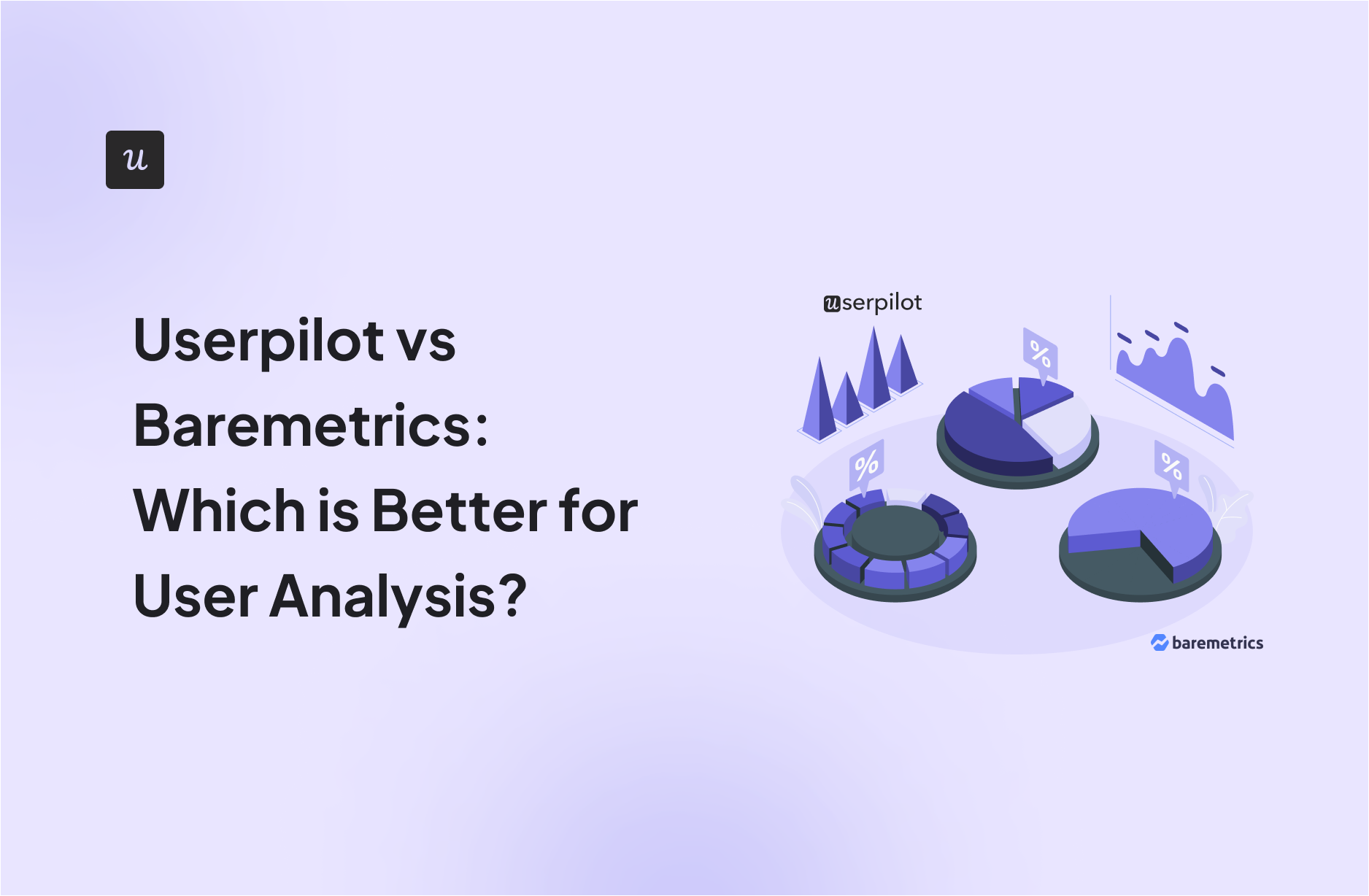
Userpilot vs Baremetrics: Which is Better for User Analysis?18 min read
Is Userpilot or Baremetrics the best tool for user analytics? And is there a better software that would better fit your needs?
With so many alternatives on review sites, it’s a bit tricky to choose one.
You need to consider your priorities and what functionality you’ll need from the tool to get the job done. Then there’s also the price that needs to match your budget. Right?
In this post, we’ll discuss exactly that – what the perfect tool for performing user analysis should deliver and which will be the best choice for your company’s needs.
Let’s dive in!
Get The Insights!
The fastest way to learn about Product Growth, Management & Trends.
Overview of Userpilot vs Baremetrics for User Analysis
- Let’s explore how Userpilot and Baremetrics compare when it comes to performing user analysis.
- Userpilot is a product growth platform that drives user activation, feature adoption, and expansion revenue. It also helps product teams collect user feedback, streamline onboarding, and gather actionable insights from analytics.
- Baremetrics is a subscription analytics and insights management platform that helps businesses get hundreds of valuable metrics and insights, achieving real-time growth.
- Userpilot emerges as a standout solution with its unwavering focus on user onboarding, engagement, and product adoption. Let’s take a look at some distinctive advantages that Userpilot offers over Baremetrics:
- User onboarding functionality: Userpilot is a great solution for companies that emphasize enhancing user engagement and user experience, promoting user activation inside their software or application because it specializes in user onboarding and product adoption, unlike Baremetrics.
- In-app guidance: With Userpilot’s in-app guidance and communication tools and features, you are empowered to guide users within their product, improving user onboarding and feature adoption. This can directly impact user satisfaction and retention.
- In-app surveys to collect user feedback: Userpilot’s focus on user feedback collection allows you to gather qualitative insights directly in-app with ready-made in-app surveys.
- Interactive walkthroughs: With Userpilot, you can create in-app walkthroughs and guides to educate your users about your product features. You can’t do this on Baremetrics as it is not a product adoption software.
- Get a Userpilot demo and drive your product growth code-free.
What is user analysis?
User analytics is the process of capturing and analyzing user behavior within your product. This helps to understand how different segments act in-app, identify friction and drop-off points, and make data-driven decisions.
Must have features for user analytics tools
Choosing the right user analytics tool is important for understanding your customers’ behavior and optimizing their journey. Here’s what you should look for:
- Event tracking: The chosen tool should come with the ability to set up events for monitoring in-app behavior. It should be capable of tracking both client and server-side events so you can have a better understanding of how users interact with your product.
- Analytics dashboards: These include no-code reports and dashboards that you can easily build to draw meaningful insights from collected data. It’s also highly recommended that these dashboards have advanced segmentation filters so you can filter data for a better understanding of specific user groups.
- Surveys: In addition to behavioral data, it’s also necessary that the chosen tool is capable of collecting and analyzing feedback. Such direct data from customers can help you understand customer expectations and work on improving your product.
Userpilot for user analytics
User analytics lets you track and analyze the behavior of users within your product. Userpilot lets you filter through customers from a unified dashboard, extract insights from specific segments or time periods, and create custom segments for all users who meet certain conditions. Here’s an overview of Userpilot’s analytics features:
- Users dashboard: Userpilot’s users dashboard gives you an overview of all user data in one place. You’ll be able to filter by segments, which companies users are from, or when they were last seen active. You can also export data in bulk as a CSV or perform actions on individual users.
- User and company profiles: Here you can view data related to a certain user/company to gain insights into their behavior i.e. Top events, Top pages, Sessions, Sentiment – user’s feedback (NPS & Survey), etc. With such granular insights, you can go one step further with your personalization efforts.

- Audience insights: Much like the overview dashboard, the Insights section lets you filter metrics by segment, company, and time period. You’ll be able to choose between a daily, weekly, or monthly view and then compare data between the current and previous time periods.
- Conditional segmentation: Practical use cases for user analytics include creating segments for all users that meet certain conditions. For instance, you could reach out to companies in a certain country when creating a new flow or target customers who have tried certain features.
- Saved reports: With Userpilot, you can create funnels, trends, retention tables, and path reports. The saved reports dashboard lets you view, edit, duplicate, or delete any trend and funnel reports you’ve created. You’ll also be able to sort by report type, filter by the teammate who created the report, or export in bulk if you need a CSV of your user analytics.
- Dashboards: Once you log in to Userpilot, you will see a collection of dashboards that collects all your key product metrics like product usage, user activation, feature engagement, etc. These dashboards are automatically available without you having to set anything up.
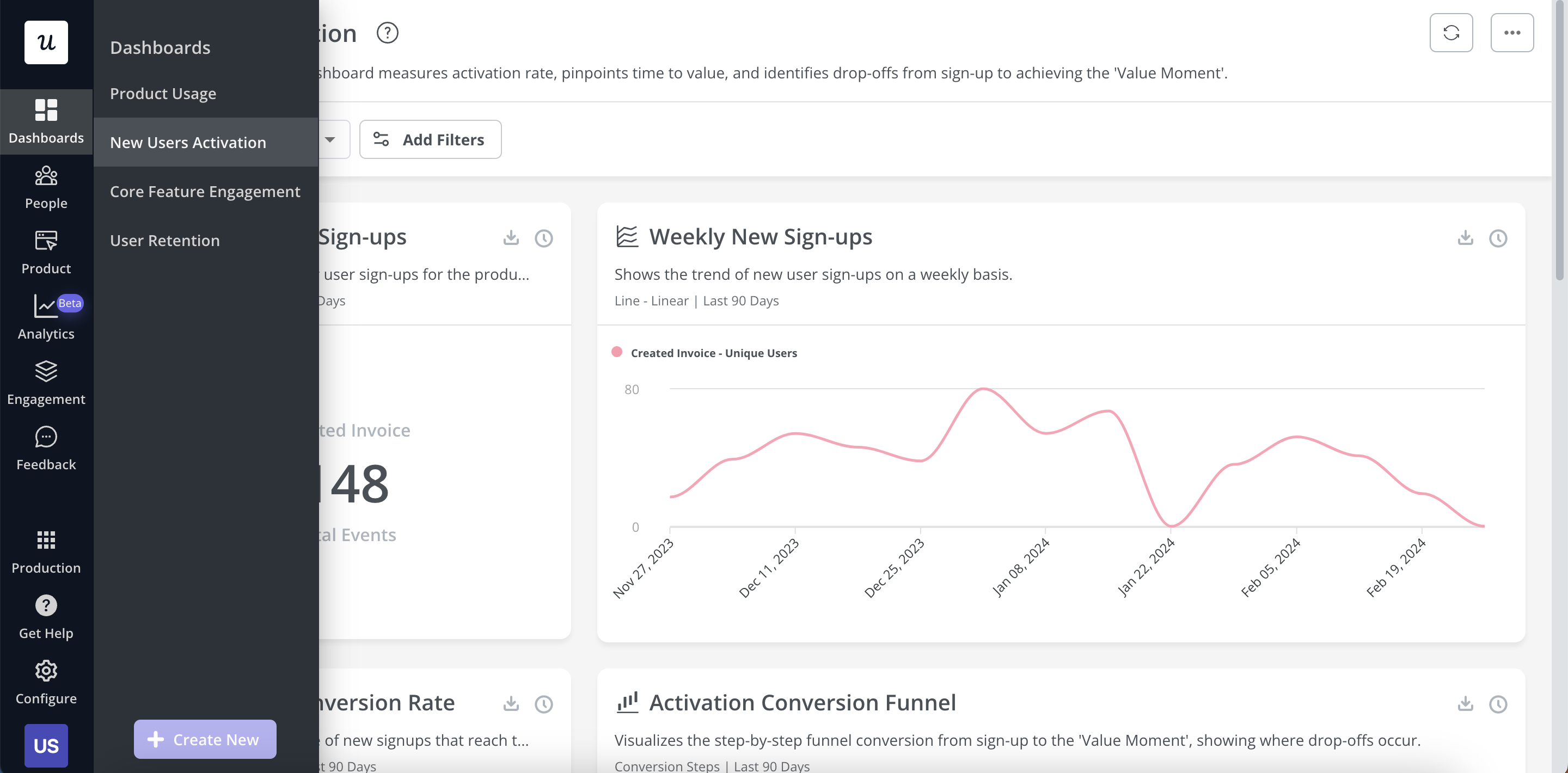
In-app events in Userpilot
Tracking and analyzing event data gives you a better understanding of user behavior so you can capitalize on opportunities to improve the in-app experience.
Here are the ways you can use Userpilot as an event-tracking tool:
- Event tracking: The Userpilot flow builder lets you track custom events by tagging individual features (Feature Tag), by API (called Tracked Events) or by setting them up using a combination of feature tags and tracked events (Custom Events).
- Feature tags: Userpilot’s no-code feature tagger lets you track important features/elements based on different interaction types (clicks, hovers, and text inputs). You can then display the engagement and performance of different features through heatmaps.
- Data integrations: Userpilot has native integrations with popular analytics tools like Amplitude, Mixpanel, Google Analytics, and more. This makes it possible to sync your event data across multiple tools within your tech stack.
In-app surveys in Userpilot
In-app surveys are an effective way to collect direct feedback from users without being at the whim of their email inboxes. Userpilot’s built-in functionality lets you create surveys, translate them, and track granular survey analytics that offer additional user insights.
Here are the Userpilot features you can use when building in-app surveys:
- Survey templates: Userpilot’s no-code survey builder has 14 templates to choose from. These include NPS, CSAT, and CES surveys among others for collecting quantitative and qualitative feedback from users. You can add a series of questions to gather valuable insights.
- Survey translation: Userpilot’s AI localization feature lets you translate surveys in a matter of minutes. All you need to do is add the desired locale and leave the rest to Userpilot. You can also make manual tweaks to translations if needed.
- Advanced analytics: Userpilot has detailed analytics that shows what percentage of users chose a specific option, summarizes the most popular choices, and lets you browse through open-ended responses to extract insights from qualitative feedback.
Baremetrics for user analytics
Baremetrics primarily focuses on subscription analytics, but it does offer some user analytics features that can be helpful:
- User segmentation: With Baremetric’s new segmentation, you can create and save groupings of all your customers in seconds. Baremetrics allows you to segment your user base based on various criteria such as subscription plans, location, signup date, etc. This segmentation helps you understand different user groups and their behaviors.
- User churn analysis: When you are tracking user cancellations and the reasons behind them, Baremetrics helps you identify patterns in user churn. This information can be used to improve your product or service and address pain points that lead to cancellations.
- Trial insights feature: You can Improve your conversion rates by monitoring exactly what’s going on while your customers are on trial. With trial insights, you will keep track of conversion rate, average trial length, active trials, and new trials with up-to-the-minute data.
In-app events in Baremetrics
In addition to calculating subscription data and metrics, Baremetrics also monitors important customer events like upgrades, downgrades, cancellations, and more. With Baremetrics, it’s never been easier to know your customer’s history with your business. You can monitor:
- New Customers: New customers are customers who either signed up or converted from a free trial.
- Upgrades: Upgrades are customers who have upgraded from one paid plan to a more expensive paid plan.
- Switches: Switches are customers who have changed plans. In the case of a customer moving from one plan to a less expensive plan, the switch will be considered a downgrade. Keep reading for more information about downgrades in Baremetrics.
- Charges: Charges are payments your customers have made.
However, if you want to track product or user events, Baremetrics may not be the best tool for that.
In-app surveys in Baremetrics
Baremetrics doesn’t support in-app surveys so you can’t collect direct customer feedback with it.
Pros and cons of Userpilot
While Userpilot’s versatile feature set and relatively affordable entry-level plan make it an attractive option for most SaaS companies, there are bound to be certain scenarios where it simply isn’t the right tool for the job.
Here are a few scenarios where you should look for a different tool other than Userpilot:
- Tight budgets: Userpilot is the best option for mid-market SaaS companies who want to get the most bang for their buck with plans including unlimited feature usage, fully interactive walkthroughs, advanced analytics, integrations, and a wide array of feedback collection mechanisms — all starting at $249/month. However, early-stage startups with sub-$100 budgets may want to look into options like Intercom, UserGuiding, and Product Fruits.
- Employee onboarding: Userpilot’s Chrome extension and no-code flow builder only works with your product, meaning it can’t be used to onboard employees to third-party apps. For onboarding internal teams, WalkMe is a viable solution that you should consider.
- Mobile apps: Userpilot is only compatible with responsive web apps as a narrow focus is essential to providing the best functionality needed to onboard users. As such, those looking to onboard users to mobile apps should check out platforms like Appcues and Pendo.
Pros of Userpilot
As a full-suite digital adoption platform, Userpilot has all the features you need to onboard users, track analytics, and gather feedback from customers without writing a single line of code. Here are a few pros of using Userpilot as your product growth solution:
- No-code builder: Userpilot’s Chrome extension lets you build flows, add UI elements, and tag features without writing a single line of code.
- UI patterns: There are plenty of UI patterns to choose from when using Userpilot, such as hotspots, tooltips, banners, slideouts, modals, and more!
- Startup-friendly: Userpilot’s entry-level plan gives you access to all available UI patterns so you can hit the ground running.
- Walkthroughs and flows: Build engaging interactive walkthroughs and personalized onboarding flows that target specific segments of your user base.
- Self-service support: Build an in-app resource center to help users solve problems, customize its appearance to align it with your brand, and insert various types of content (videos, flows, or chatbots) to keep your customers satisfied.
- A/B testing: Userpilot’s built-in A/B testing capabilities will help you split-test flows, iterate on the best-performing variants, and continually optimize based on user behavior.
- Feedback collection: Userpilot has built-in NPS surveys with its own unified analytics dashboard and response tagging to help you retarget users. There are other survey types to choose from and you can even create your own custom survey.
- Survey templates: There are 14 survey templates to choose from so you can gather feedback on specific features or run customer satisfaction benchmarking surveys like CSAT and CES.
- Advanced analytics: Userpilot lets you analyze product usage data, monitor engagement on all in-app flows, and use the data to create user segments that are based on behaviors instead of demographics.
- Event tracking: Userpilot’s no-code event tracking lets you tag UI interactions (hovers, clicks, or form fills) and group them into a custom event that reflects feature usage.
- Third-party integrations: Userpilot has built-in integrations with tools like Amplitude, Mixpanel, Kissmetrics, Segment, Heap, HubSpot, Intercom, Google Analytics, and Google Tag Manager so you can share data between all the solutions in your tech stack.
Cons of Userpilot
Of course, no tool is perfect and there are a few cons to consider before choosing Userpilot as your user onboarding or product growth solution:
- Employee onboarding: Currently, Userpilot only supports in-app customer onboarding.
- Mobile apps: Userpilot doesn’t have any mobile compatibility which could make it difficult for developers with cross-platform applications to create a consistent user experience for both versions of their product.
- Freemium plan: There’s no freemium Userpilot plan so those bootstrapping their startup and need sub-$100 solutions should consider more affordable onboarding platforms like UserGuiding or Product Fruits.
Pros and cons of Baremetrics
Let’s look at the most common scenarios where Baremetrics is NOT the right tool for analytics needs, and you should be looking into using a different one:
- You need non-subscription-based revenue model functionality: If you want benefits other than subscription-based analytics results, then you can look no further to tools that offer a wide range of features.
- You need a tool with full-fledged customer experience management: If you are looking for an all-encompassing customer experience management platform that includes customer feedback, support ticket tracking, and user sentiment analysis, a tool like Userpilot or Zendesk will align better with your needs.
- You need customization beyond financial metrics: Baremetrics specifically offers insights on revenue, churn, and subscription metrics. So, if you want extensive customization of metrics and reports beyond revenue and subscription insights, a business intelligence tool like Tableau or Looker could provide the flexibility you’re looking for.
- You need a holistic customer feedback analysis: If you want to capture and analyze both quantitative subscription data and qualitative customer feedback, tools like Userpilot are the way to go. Baremetrics does not offer a comprehensive offering for feedback.
Pros of Baremetrics
Baremetrics has a number of advantages, especially for SaaS companies and Startups who are interested in investing in subscription analytics software. One click, and you get hundreds of valuable metrics and business insights! Let’s look at the pros of using Baremetrics:
- Subscription analytics: Baremetrics specializes in subscription analytics, making it valuable for SaaS businesses with subscription-based revenue models. A subscription analytics dashboard can offer deeper insights than manual analytics efforts and save startups money in the long run.
- Revenue insights: It provides a clear overview of revenue metrics, including MRR, ARR, and churn rates. These metrics track all recurring revenue normalized to a monthly or yearly amount.
- Churn analysis: Understand why customers cancel subscriptions through the Baremetrics cancellation insights feature. While every company will have some subscription cancellations, a higher churn rate makes it harder to achieve sustainable business growth. Baremetrics tracks user churn, revenue churn, and net revenue churn, giving you a complete picture of the financial impact of canceled subscriptions.
- User-friendly interface: Its intuitive interface makes it easy to navigate and understand metrics without technical expertise.
- Seamless integrations to payment platforms: Baremetrics integrates with your favorite payment providers and platforms like Shopify, Google Play, Stripe, Recurly, etc.
- Forecasting: With historical data and trends at your fingertips, you can create accurate revenue forecasts to assist in business planning.
- Comparison of your customer segments in dashboards: Choose between any of your custom segments on any dashboard and get instant historical comparisons. Baremetrics allows you to perform simple health checks to see how different groups of customers are growing.
Cons of Baremetrics
While Baremetrics poses a great advantage for subscription-based companies and SaaS startups, there are still some limitations when it comes to analytics functionality and general product adoption. Below are the cons of using Baremetrics:
- Limited non-subscription metrics: While great for subscription-based businesses, it might not be as comprehensive for non-subscription revenue models.
- Steep pricing plan: The pricing plans might be a little steep for smaller businesses or startups with a tight budget.
- It’s not a full customer experience tool: While it offers insights into user behavior, it’s not a dedicated tool for managing all aspects of your brand’s customer experience.
- The steeper learning curve for non-analysts: If you aren’t familiar with financial analytics, you might require time to understand the metrics, interpret trends, and translate insights into actionable strategies.
Userpilot vs Baremetrics: Which one fits your budget?
Understanding the cost implications is paramount when selecting the right solution for user analysis, so here’s a detailed pricing comparison of Userpilot and Baremetrics.
Pricing of Userpilot
Userpilot’s transparent pricing ranges from $249/month on the entry-level end to an Enterprise tier for larger companies.
Furthermore, Userpilot’s entry-level plan includes access to all UI patterns and should include everything that most mid-market SaaS businesses need to get started.
Userpilot has three paid plans to choose from:
- Starter: The entry-level Starter plan starts at $249/month and includes features like segmentation, product analytics, reporting, user engagement, NPS feedback, and customization.
- Growth: The Growth plan starts at $749/month and includes features like resource centers, advanced event-based triggers, unlimited feature tagging, AI-powered content localization, EU hosting options, and a dedicated customer success manager.
- Enterprise: The Enterprise plan uses custom pricing and includes all the features from Starter + Growth plus custom roles/permissions, access to premium integrations, priority support, custom contract, SLA, SAML SSO, activity logs, security audit, and compliance (SOC 2/GDPR).
Pricing of Baremetrics
Baremetrics has 4 different plans for SaaS companies looking to scale their subscription-based business model. These plans range from a core suite of metrics to many modules that can supercharge your SaaS growth, reduce churn, recover failed charges, and plan for the future.
Here’s a brief overview of the features of each plan and their price tags:
Note: Each pricing plan value depends on your current MRR. So, we are using the $0K value as a benchmark to review the different plans.
- Metrics plan: $108/mo. Features include—smart dashboards, benchmarks, export data, data enrichment, segmentation, analytics API, automated email reports, trial Insights, Slack tools, Intercom Integration, etc.
- Recover plan: $58/mo. The pros of this plan include—Automated Email reminders to delinquent customers, recovery of more than your entire Baremetrics cost or next month is on them, customizable credit card forms, in-app banners and screen takeovers to prompt payment, easy to grab, custom recover link, and more.
- Cancellation insights plan: $108/mo. Features include customizing your reasons for cancellation, recovering more than your entire Baremetrics cost or next month is on us, personalized email questionnaires, in-app popups to collect cancellation feedback, automated follow-up emails, etc.
- Forecast+ plan: With this plan, you can see intelligent MRR projections with configurable options. It is included with metrics. So what are the features? Connect to Quickbooks Online or Xero, generate financial models like P&L, Balance Sheet, and Cash Flow Statement, forecast MRR, ARR, Customer growth, and more.
Userpilot vs Baremetrics – Why Userpilot might be a better choice?
Userpilot emerges as a standout solution with its unwavering focus on user onboarding, engagement, and product adoption. Let’s take a look at some distinctive advantages that Userpilot offers over Baremetrics:
- User onboarding functionality: Userpilot is a great solution for companies that emphasize enhancing user engagement and user experience, promoting user activation inside their software or application because it specializes in user onboarding and product adoption, unlike Baremetrics.
- In-app guidance: With Userpilot’s in-app guidance and communication tools and features, you are empowered to guide users within their product, improving user onboarding and feature adoption. This can directly impact user satisfaction and retention.
- In-app surveys to collect user feedback: Userpilot’s focus on user feedback collection allows you to gather qualitative insights directly in-app with ready-made in-app surveys.
- Interactive walkthroughs: With Userpilot, you can create in-app walkthroughs and guides to educate your users about your product features. You can’t do this on Baremetrics as it is not a product adoption software.
What do users say about Userpilot?
Most users laud Userpilot for its versatile feature set, ease of use, and responsive support team:
I recently had the pleasure of using Userpilot, and I must say it exceeded all my expectations. As a product manager, I’m always on the lookout for tools that can enhance user onboarding and improve overall user experience. Userpilot not only delivered on these fronts but also went above and beyond with its impressive new features, unparalleled ease of use, and truly exceptional customer support.
What truly sets Userpilot apart is its outstanding customer support. Throughout my journey with Userpilot, the support team has been responsive, knowledgeable, and genuinely dedicated to helping me succeed. Whenever I had a question or encountered an issue, their support team was always there to assist promptly, going above and beyond to ensure my concerns were addressed effectively.
Source: G2.
Of course, other users are also kind enough to share constructive criticism regarding specific features like event tracking filters:
“The filtration while analyzing specific events is a little confusing. Understanding of custom properties and data management configuration could have been more organised.”
Source: G2.
Conclusion
This is the end of our thorough comparison between Userpilot and Baremetrics. You should be able to make a confident decision by now. If you’re looking for a solid tool for user analytics that promises great value for money, give Userpilot a go. Book a demo today.

